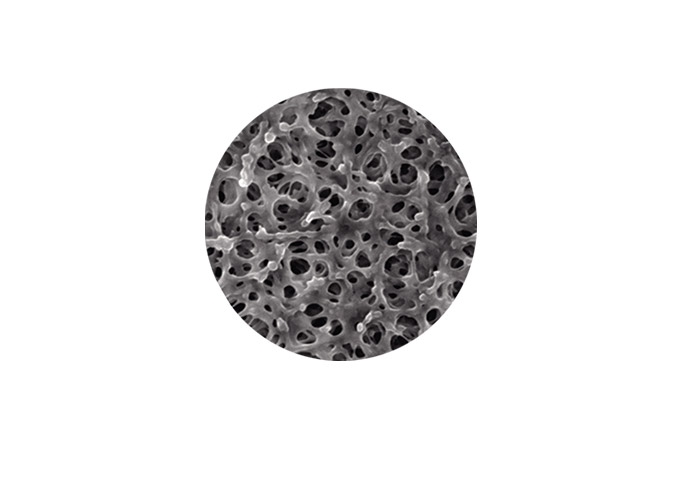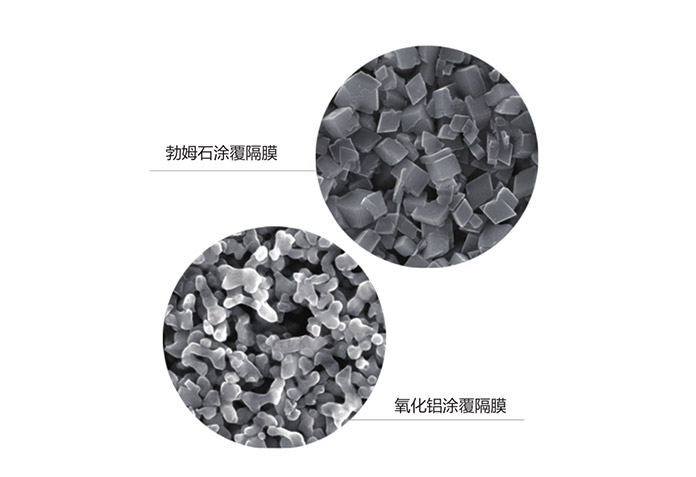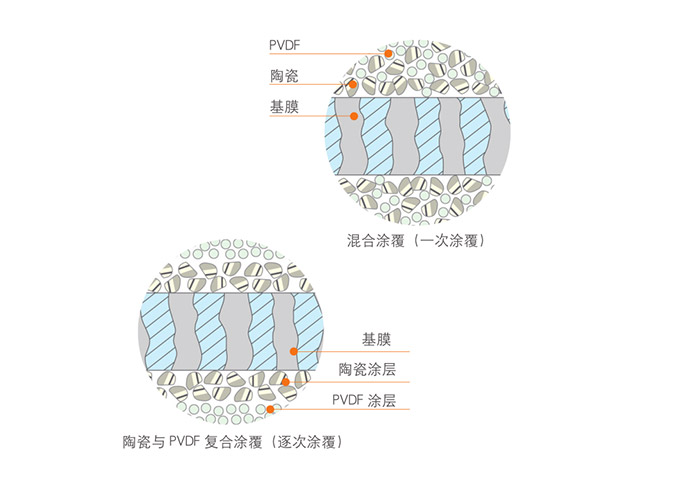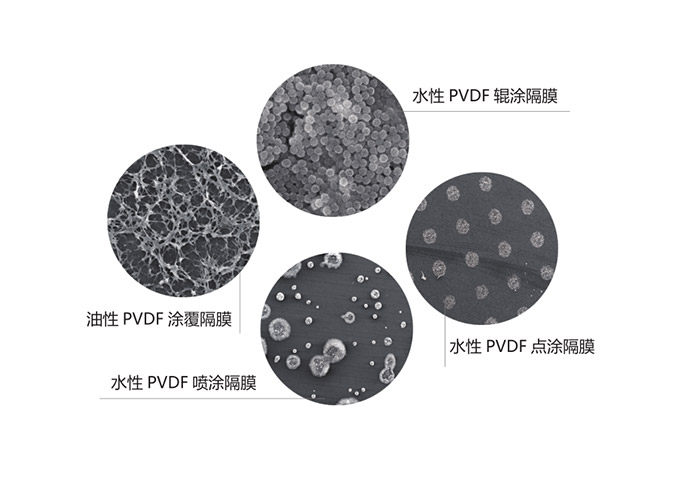Ceramic coated separator
The ceramic coated separator is based on traditional polyolefin separator by coating ceramic materials such as high-purity nano-alumina or boehmite on one or both sides to improve the separator thermal stability. The ceramic coated separator has better high-temperature resistance and performs better in liquid absorption and liquid retention. Mainly used in power batteries and multiplier batteries, it can greatly improve the safety and stability of Li-ion batteries.
PVDF coated separator
The PVDF coated separator is, based on the traditional polyolefin separator, coated with PVDF polymer material with the microporous structure after special treatment. It is combined with the binder in the electrode by hot pressing to enhance the hardness of the battery core, and with the electrolyte to form a stable gel conductive polymer. Mainly used in digital Li-ion batteries, it can effectively maintain the cell structure and improve the ion conductivity and cycle life of the battery.
Aramid coated separator
The aramid coated separator is based on traditional polyolefin separator by coating aramid polymer materials on one or both sides, so that the separator has better high-temperature resistance than the ceramic coated separator, while the electrolyte wettability is also significantly improved, thus improving the liquid absorption rate, liquid retention rate and liquid absorption speed of the separator; meanwhile, the excellent oxidation resistance of the aramid fiber helps to achieve high potential, thereby increasing the battery energy density.
Hybrid coating separator
To make the traditional polyolefin separator have the performance advantages of both ceramic and PVDF coated separators, we have developed two types of hybrid coating separator products, MFS single hybrid coating and MCS layered coating. Besides improvements in the high-temperature stability, it strengthens the adhesion between the separator and the pole piece to further improves the liquid absorption and retention performance and ion conductivity. It protects the cathode material, reduces the battery short-circuit rate, and improves the overall expansion during the Li-ion battery charge and discharge cycle, extending the battery life.




